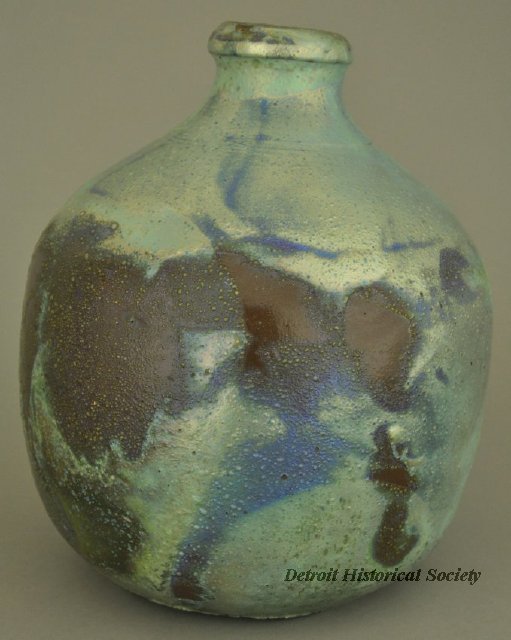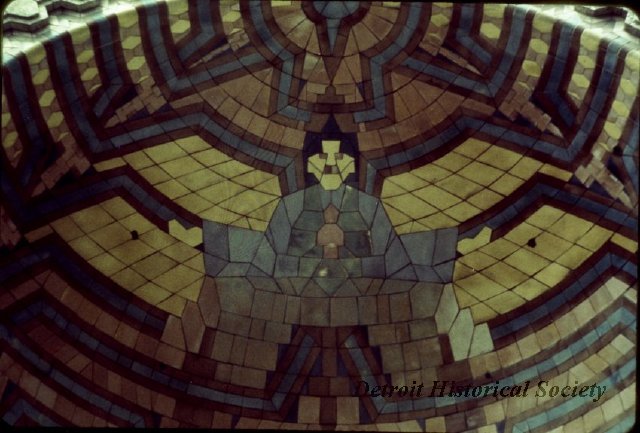Pewabic Pottery was founded in 1903 by Mary Chase Perry (later Mary Chase Perry Stratton) and her partner Horace James Caulkins at the height of the Arts & Crafts movement in America. The Pottery's first home was a carriage house on Alfred Street in Detroit. Four years later, Pewabic Pottery moved to a new facility on East Jefferson designed by architect William Buck Stratton in the Tudor Revival style. In 1991, the building and its contents were designated a National Historic Landmark and today continues to operate as a pottery.
Through Caulkins’ “Revelation Kiln” and Stratton’s artistic direction, Pewabic Pottery produced nationally renowned vessels, tiles, and architectural ornamentation for public and private installations featuring their unique iridescent glazes. When the Great Depression reduced the demand for costlier wares, ceramic jewelry was produced by Pewabic. Works fabricated by Pewabic Pottery can be seen throughout the United States in such places as the National Shrine of the Immaculate Conception in Washington, D.C., the Nebraska State Capitol, the Shedd Aquarium in Chicago, and the Herald Square installation commissioned by the New York Metro Transit Authority.
In Michigan, Pewabic installations can be found in countless churches, including Most Holy Redeemer Church and the Cathedral Church of St. Paul in Detroit, schools like Eliel Saarinen’s Cranbrook-Kingswood School, and a long list of commercial buildings and public facilities. These include Detroit's Guardian Building, the Detroit Public Library Main Branch, Comerica Park, the Belle Isle Aquarium, and Detroit Metro Airport’s McNamara Terminal. Works by Pewabic also grace public spaces like several Detroit People Mover stations and private residences, particularly in Detroit's Indian Village neighborhood and nearby suburbs of Bloomfield Hills and Grosse Pointe. Pewabic art pottery can also be found in many private and public collections including the Detroit Institute of Arts and the Freer Gallery at the Smithsonian Institution in Washington, D.C.
The nonprofit Pewabic Society Inc. now operates the pottery and has expanded their initiatives to include education and museum space within the historic building. Many Pewabic products are still produced and sold at the site.

